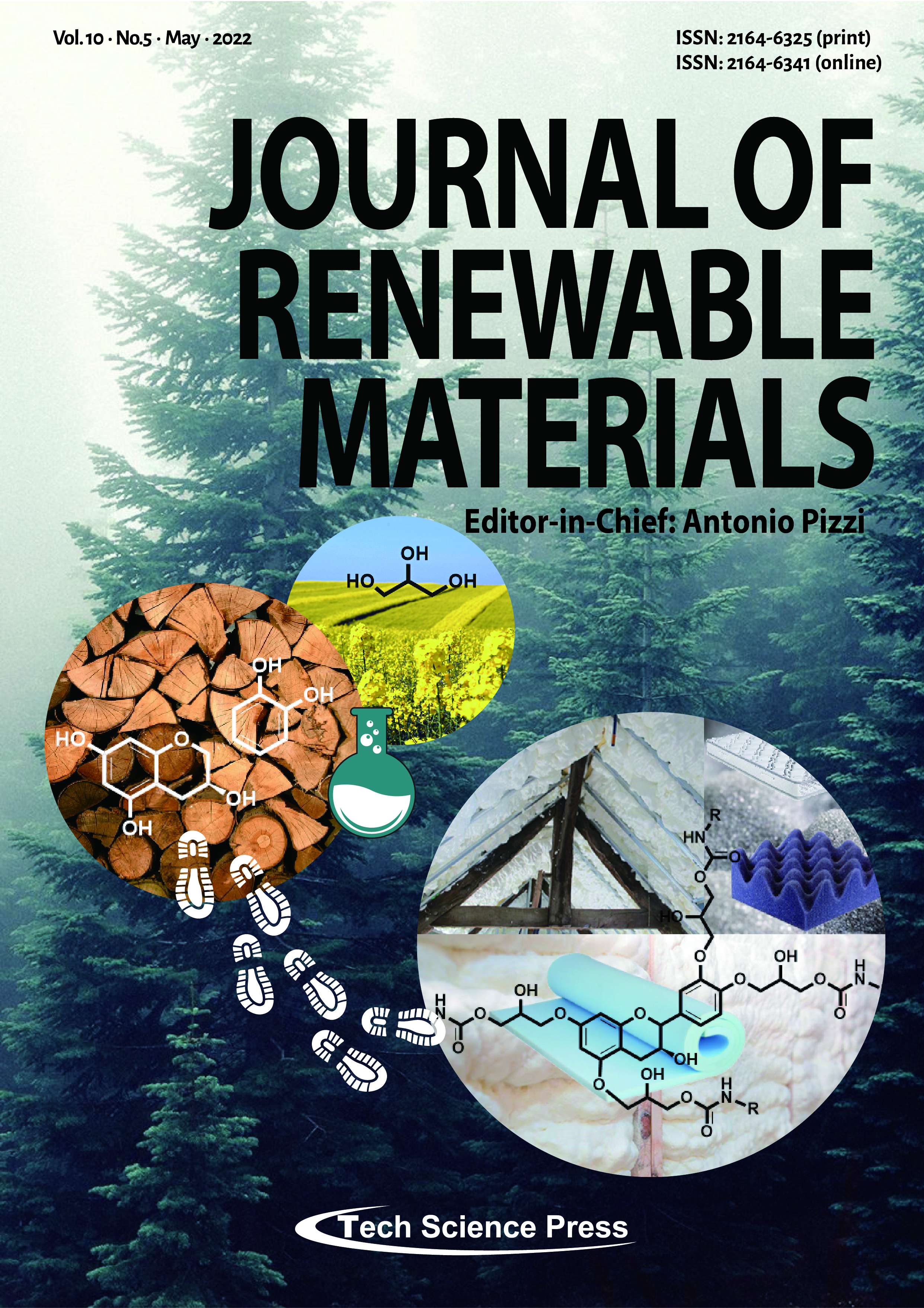A Vanillin-Derived, DOPO-Contained Bisphenol as a Reactive Flame Retardant for High-Performance Epoxy Thermosets
Li Wang1,2,#, Rongbai Tong3,#, Juanli Wang1,2,*, Jintao Wan1,2,*, Yuhu Li1,2, Pujun Jin1,2, Daodao Hu1,2
Journal of Renewable Materials, Vol.10, No.5, pp. 1349-1364, 2022, DOI:10.32604/jrm.2022.019372
- 22 December 2021
(This article belongs to the Special Issue: Bio-based Halogen-free Flame Retardant Polymeric Materials)
Abstract Quest for bio-based halogen-free green flame retardant has attracted many concerns in recent years. Herein a reactive functional flame retardant containing phosphorus VDP is synthesized from vanillin, 9,10-dihydro-9-oxa-10-phosphophene-10-oxide (DOPO) and phenol via a facile way. VDP is characterized with 1H NMR, 31P NMR, FTIR and Time of Flight Mass Spectrometry, and used as a new reactive flame retardant for bisphenol epoxy thermosets. Thermogravimetry analysis shows that when the VDP loading is only 0.5P% (based on phosphorus content), the residue increases from 14.2% to 21.1% at 750°C in N2 compare with neat DGEBA. Correspondingly, the limit oxygen index… More >
